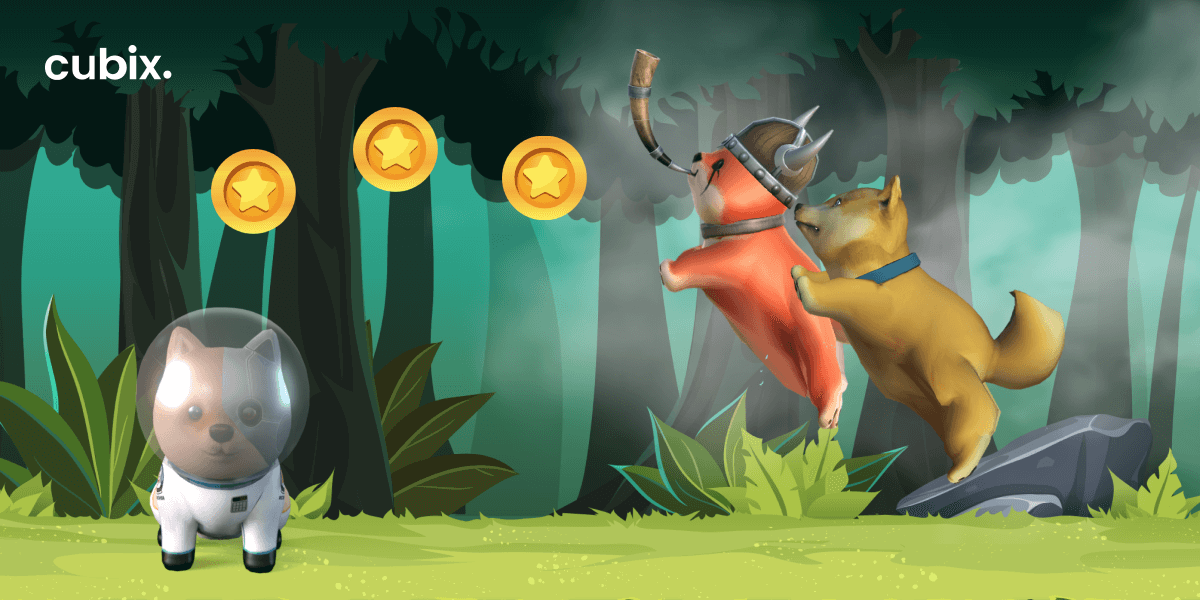This article will inform you about the vital elements of top hyper-casual games, a practical checklist for hyper-casual game development, and the steps you need to take to find success in this game genre.
What are hyper-casual Games?
They are instantly playable games with short gaming sessions and are lightweight to download on any device. Since hyper-casual games are intuitive, players visit them more often. Despite their single-purpose functionality, these games are challenging to play and give a sense of accomplishment on each level.
Think of a world-famous game like "Flappy Bird" to grasp how casual games are developed. The game is so easy; the only thing a player has to do is tap. In their spare time, a player consistently beats their previous record.
People often use the term ‘snackable content’ for this game category as it can be played while standing in a queue, commuting, or during tea breaks. The concept is simply reviving the arcade era of the 80s. These games tend to scale more quickly and become viral compared to other categories.
Even though mobile application stores are loaded with thousands of top hyper-casual games, they all share the same attributes, like minimal UI, fewer features, bright colors, and no fancy animations. Some common elements found in this game genre are:
Agility
Move quickly to dodge obstacles while collecting coins to reach the next level. As the player advances, the gameplay speed increases.
Puzzle
A player moves different pieces on the screen in a specific order to create an image.
Stacking
Like the Tetris game concept, objects of different shapes fall from the top and must be placed in the correct slot/position.
Timing
It's a race against time where players must reach the finish line before they run out of time.
Read More: How much does Unity Game Development Cost?
How Do You Develop Hyper-Casual Games?
Every creative project begins with a concept, yet conceptualization may be complex. Fortunately, creating winning hyper-casual concepts follows a pattern. Next, you'll need to think about incorporating universally appealing themes, adjusting successful game mechanics, and including people in the enjoyment.
Complete Hyper-Casual Game Development Checklist
Choose your Game Engine
To enhance hyper-casual game development, you need to select a robust and efficient game development engine. Due to its simplicity-oriented approach, hyper-casual games are not subjected to lengthy and complicated programming. In addition, a variety of game engines are available to help you create your concept. Therefore, even a non-coder can build a hyper-casual game with no-to-less coding.
For that purpose, some best-suited game engines are:
Unity3D
Among game engines listed, Unity comes on top. It is the leading, most powerful, and well-known platform for cross-platform development. Resources and game assets from tools like Maya, 3Ds Max, and Blender can also import into Unity for game development. Apart from it, Unity also has an asset store, where users can find pre-built paid and free-of-cost items to speed up their development process. Many games on the app stores are built using the Unity game engine.
BuildBox
It is rich in functionality and effectively facilitates hyper-casual game development. It also offers visual programming, enabling game development without coding.
Cocos2D-X
It is a platform rich with features for game development and comes with Linux, Windows, and Mac support. However, its prime focus lies in the iOS and Android domains. There are many built-in functionalities to build scenes and a user-friendly UI quickly.
Acquire Game Assets
The next thing on the Hyper-casual game development checklist is acquiring assets like characters, buttons, themes, and more. As we mentioned above, game development engines like Unity comes with asset store that aid developers in getting ready-to-use components.
Prioritize Gameplay Over Theme
Creating a storyline or concept is the first step in any game development process. But this step vanishes in the hyper-casual genre, and engaging mechanics take over. It is because hyper-casual is built on the single-core mechanic, and the whole game experience is subject to one action.
In a hyper-casual environment, themes are less significant since players play these games in their spare time. Therefore, they can have a decent theme with optimized performance to achieve the intended purpose. In the competitive gaming marketplace, being unique on a mechanical level is paramount to dominating the league.
Build a Prototype
When you finish selecting game assets, it's time to create a prototype and test the concept. During this phase, focus your efforts on shorter gameplays. A player must be able to complete a level within a minute and move on to the next round. And that can be found with prototyping. It assists in validating the game concept, mechanics, difficulty, and potential to market. Then, with modifications and redo, the developer takes the game to the level where it is meant to be.
Implement Ad Placement
As hyper-casual games are not very advanced in gameplay, earning money is possible by placing advertisements. As soon as the game starts on a user device, advertisements appear to generate revenue for the developer.
Advertisements are one of the most significant sources of making a profit from mobile applications. One market survey also anticipates that the global in-game advertising market will hit the mark of $6.4B by 2027.
However, to go in the right direction, you have to analyze the correct metrics and adhere to best practices.
For hyper-casual games, the following are the most effective monetization strategies.
Read More: An Absolute NFT Game Development Checklist to Determine
Reward Video
Reward videos give bonuses to the player after they finish watching the advertisement. These types of ads are not forced, and players can voluntarily watch them to gain a bonus, skins, extra lives, coins, etc.
Banners
Banners get displayed at the screen's top and bottom. Keep in mind that their size should not affect the user experience and pop up after the level is complete or on the menu screen.
In-App Purchases
Offering users the option to purchase is an excellent choice to consider. To be unique from others, people tend to spend on in-app purchases. And in hyper-casual, people pay real money to get new characters, skins, power-ups, boosters, etc.
Ads Removing
Some people don't want ads while playing a game. They dislike popups appearing on the screen. So, build an option in your hyper-casual game for these types of gamers to remove all ads with a one-time payment. Also, it is beneficial for the publisher to earn instantly by offering an uninterrupted playing experience to the player.
Soft Launch and Testing
Achieving the balance between ease of use and game difficulty is the crucial component in a checklist for hyper-casual game development. A game needs to be accessible in an instant, but it should also neither be too easy nor too challenging to play.
Soft launch and testing practices enable game developers to evaluate game performance in terms of success rate, user experience, market performance, and design. It tells the game's marketability.
Prepare a Cross-Platform Strategy
The lifespan of a hyper-casual game is comparatively lower. People shift to other games more quickly because of the game's simplicity and single-core mechanism. Although there are ways to increase retention, cross-promotion is the most functional. To market the publisher portfolio, push advertisements and page links to application stores.
With this approach, users show interest in trying out the other games from the same developer as they have experience with their work. It allows you to continue earning money in your pocket. Besides, the developer's profile also gets popular among the audience, ultimately generating more traffic.
Understand it this way: You watch a show on Netflix, and after its few episodes, you get a recommendation from the platform saying something like, "If you like this show, you might also like..." for keeping the user engaged on the platform.
Also Read: Developing a Car Racing Game: Complete Process Explained
Summing Up
To be successful in the hyper-casual game genre, you must follow the Hyper-casual game development checklist. It is straightforward to follow, but you need to develop something out-of-the-box to stand out in the competition.
Hyper-casual games are fun to play, simple to develop, and have market potential to generate hefty revenue and growth. Following our checklist for hyper-casual game development discussed in this article can significantly help you move in the long run.
However, it is wise to consider a professional game development company that can turn your idea into a prominent growth. Cubix is the leading digital product development company in the league, serving for more than a decade. We can cover every dimension and take you to new heights of success with our top-quality hyper-casual game development services.
Contact us today to discuss your idea and how we can integrate victory into it.

